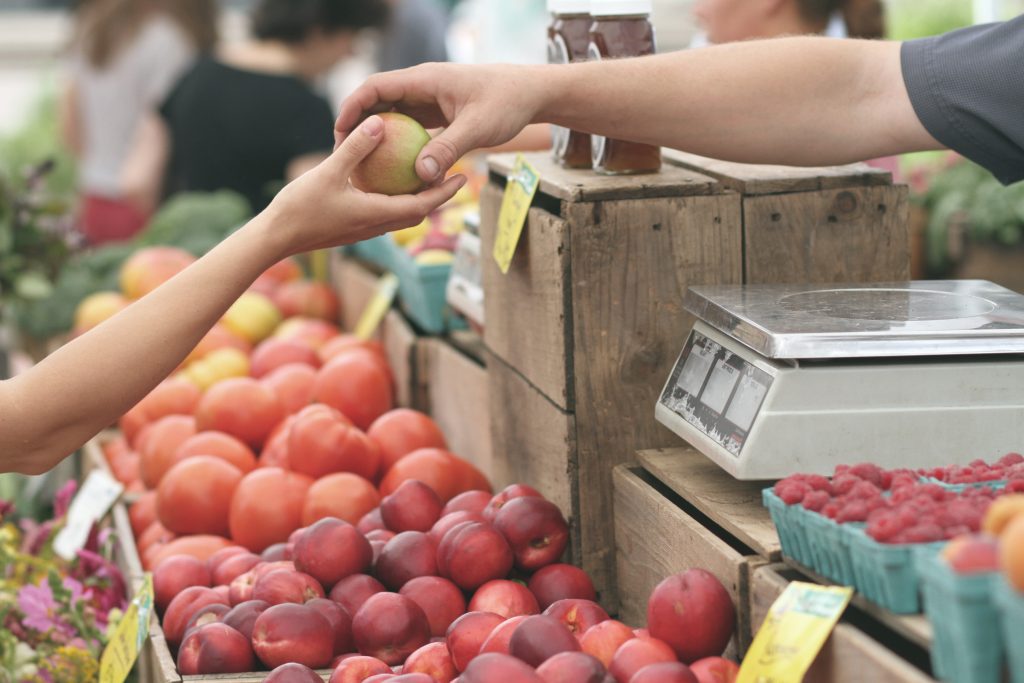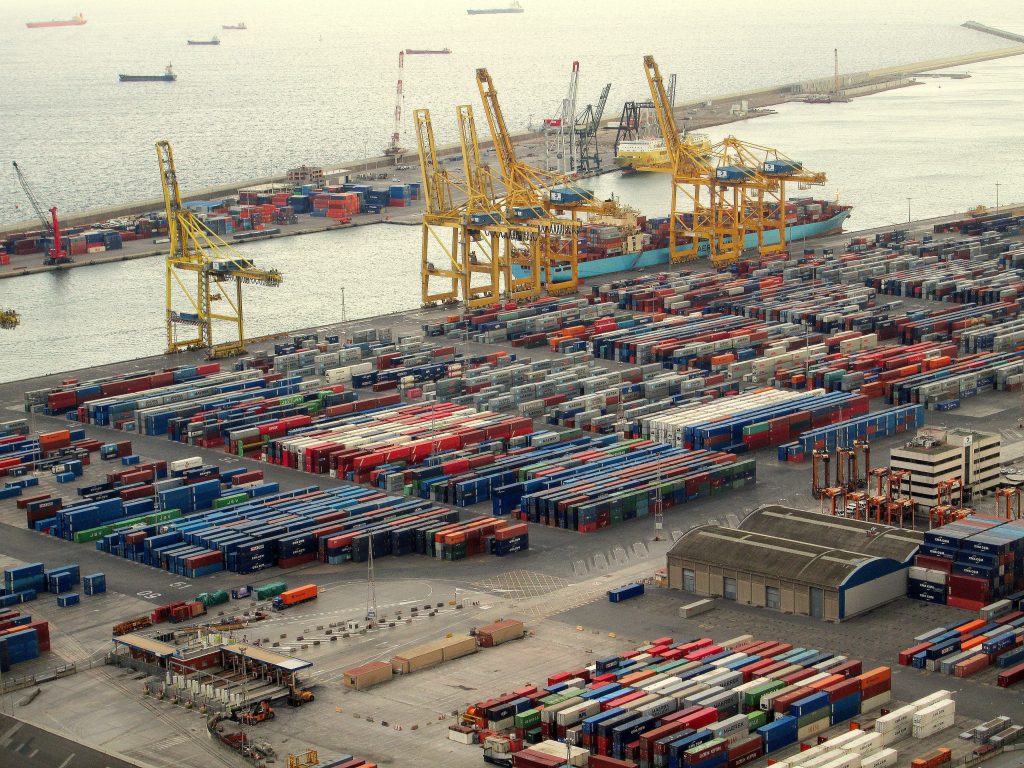in Globalized Food Supply Systems – An Overview (1). Is packaging the central connecting device in globalized food networks? This four-part essay will discuss how packaging based practices construct spatial, temporal and social bridges in differentiated food chains.
Modern food systems are characterized by a complexity and diversification that goes far beyond the glance of single actors. Supermarket consumers rarely engage with the producers of their foods. Direct interaction between producers and consumers which is typical for traditional farmer markets (Figure 1) has been replaced by complex and differentiated socio-technical systems (Figure 2). In her illuminating Blog Sociologist Nina Baur (2013) distinguishes three forms of diversification in modern food supply: firstly, the number of production steps per production stage increases (industrial production of food); secondly, the amount of production stages increases, generating more and more complex networks of supply and increasing interactions between different actors (producer-supplier networks in food supply); thirdly the production chain is expanding in space through globalization of markets (globalization of food supply).

Figure 1: Direct producer-consumer-interaction at a local farmer market

Figure 2: Complex socio-technical interactions within globalized markets
Now, what is the consequence of these processes for the functioning of supply systems?
The separation between primary resource extraction and ultimate consumption causes a multiplication and expansion of in-between processes and practices. As there are more and more points of intersection in food supply chains (points where certain forms of engagement with objects are interrupted or replaced by others) there is increasing need for an exchange of goods and information. The expansion of socio-technical networks of food supply goes along with an expansion in time and space resulting in a growing need for transport, storage and distribution. Importantly, throughout human history resources have been transported, stored and shared to some extent – from the early years of hunting and gathering to the global markets of the twenty-first century. Though, the amount of these practices changed enormously. Consequently their socio-technical requirements are changing; as the natural qualities of foods restrict the expansion of food supply chains, they trigger the need for arrangements which assure freshness, standardization and quality of products.
My central claim in this Blog-article is that technologies of packaging are one of the essential requirements for the globalization of food systems. In the next three weeks I will show how packaging acts as spatial, temporal and social bridges in diversified supply chains.
Next week I will trace the importance of packaging for the spatial expansion of food supply chains. The article will show how transporting food is based on the materiality of packaging not only for reasons of product protection, but also for reasons of transport logistics.
The week after my focus shifts to the temporal bridges enabled through packaging technologies. I will discuss the importance of packaging for extending the life of foodstuff and the temporal flexibility and acceleration of modern food consumption.
Finally my attention goes for the diverse social connections enabled by packaging. Following the idea that an industrial supply systems human interactions are more and more replaced by human-artefact interactions, and how packaging as important communication tool in globalized food supply.
For further Reading:
Baur (2013) Konsumgütermärkte als komplexe Interaktionsketten. Ein Zwischenfazit. http://soziologie.de/blog/2013/04/konsumgutermarkte-als-komplexe-interaktionsketten-ein-zwischenfazit/





